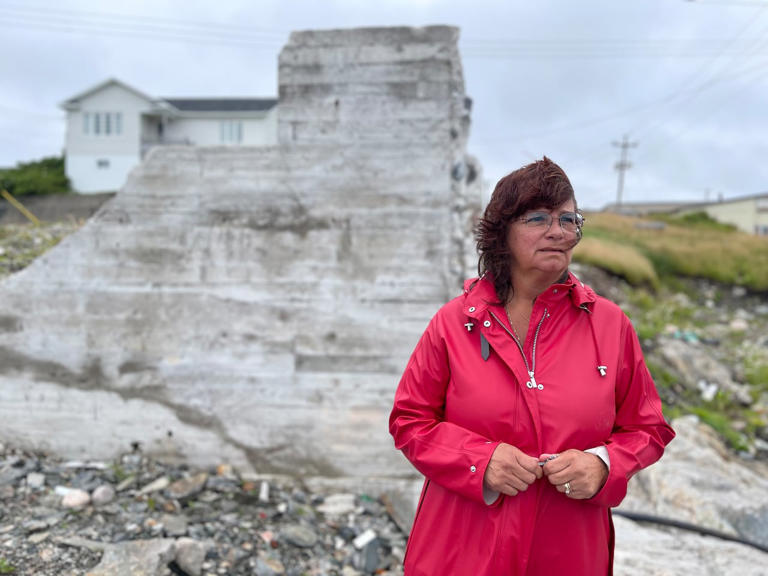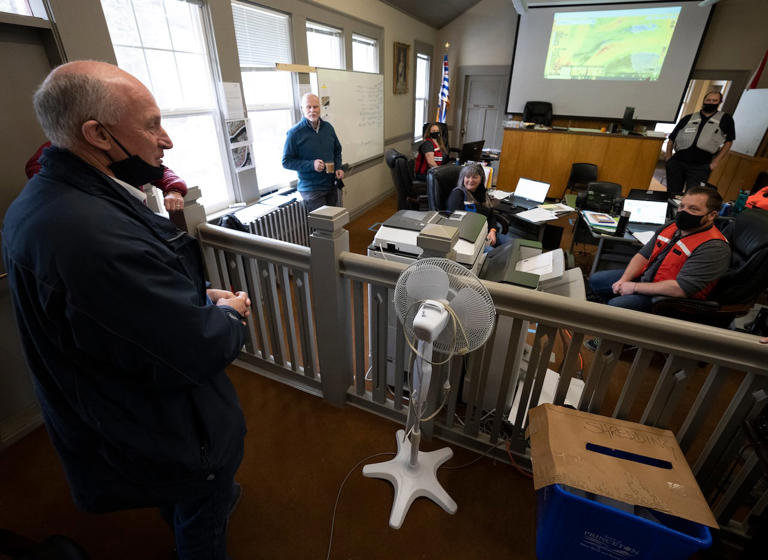Sluggish, confusing disaster relief programs aren't just a B.C. problem, experts say
Story by Rhianna Schmunk • CBC
She deciphered application criteria and waded through mounds of paperwork to figure out whether she was eligible for money from the provincial government's financial aid program as a result of the storm.
At no point, she said, did anyone from the program contact her to guide her through the process.
"I wouldn't wish it on anybody," said Savery, now 60, whose home in Port aux Basques, N.L., was levelled by the storm.
"[The application] was a nightmare from start to finish."
Savery's experience applying for provincial financial aid rings true for many residents who live through natural disasters across Canada, experts say.

Peggy Savery, now 60, takes in the scene at the site of her old home in Channel-Port aux Basques in September. (Brianna Gosse/CBC)© Provided by cbc.ca
A watchdog report released in British Columbia this week said that the province's programs were outdated, under-resourced, inaccessible and poorly communicated at the time of extreme flooding and fires in 2021. Unclear and confusing communication, unreasonable delays and a lack of flexibility about how help was delivered left residents navigating an uphill battle at a time when they were already at the end of their emotional rope.
"That's not just a B.C. problem," said Blair Feltmate, head of the Intact Centre on Climate Adaptation at the University of Waterloo.
"You could take out B.C. and put pretty much any province's name in that report and it would work."
Programs unclear and slow, report says
The report in B.C. looked at two specific emergency assistance programs: Emergency Support Services and the Disaster Financial Assistance Program. The first gives families short-term support within 72 hours and the second provides money toward rebuilding for people who don't have enough insurance to cover their losses.
Ombudsperson Jay Chalke said the programs weren't designed to deal with the scale of modern-day extreme weather fuelled by climate change. The programs aren't staffed properly to provide quick help to the sheer number of evacuees and, even if they had enough workers, most people need help well beyond the three-day window.
The report said people who were Indigenous, elderly or living with disabilities had particular trouble managing applications.
Related video: 'One-size-fits-all' approach to emergency relief not working, ombudsperson says (cbc.ca)Duration 2:18View on Watch
In his work, Feltmate has run two analyses ranking how prepared Canadian provinces are for extreme flooding, in particular. In the most recent, released in 2020, most provinces improved from the first study in 2016, but the country's average grade was set at a "C". (At B-, Yukon and Prince Edward Island had the highest score.)
"It's monumentally frustrating.… It does not seem to be that difficult to figure out, to develop a system that can increase efficiency, but we're simply not doing it," he said.
"For reasons that are beyond me, we don't seem to learn from one incident to the next."
The provincial government in B.C. accepted all 20 recommendations from the Ombudsperson's report.

Public Safety Minister Mike Farnworth addresses an emergency operations centre in Princeton, B.C., on Dec. 3, 2021, following devastating floods and mudslides in the area. (Jonathan Hayward/The Canadian Press)© Provided by cbc.ca
Help should be proactive, not reactive: experts
On the same day Chalke released his findings, the B.C. government introduced new disaster management legislation to deliver a modernized approach aligned with international best practices to ensure communities are safer and more resilient.
Emergency Management Minister Bowinn Ma said the legislation looks to update what constitutes an emergency to reflect current realities and risks, while providing better tools for response and recovery.
Feltmate and other experts said existing programs should be improved, but said governments need to spend more on prevention and mitigation. Studies, they said, have shown prevention to be a worthwhile investment with more severe weather in the forecast as a result of climate change.
"What we need to do in light of increasing risk of these extreme events is think about how to reduce the impact of these events on the communities moving forward in an anticipatory way," said Maryam Golnaraghi, director of Climate Change and Environment at the Geneva Association.
In 2019, Public Safety Canada estimated every dollar spent on mitigating future disasters could save roughly $6 in recovery costs down the road.
Canada launched its National Adaptation Strategy in June, with more than two dozen steps to mitigate the effects of extreme fire, flooding and heat. The plan has a goal to modernize the federal financial aid program by 2025 to improve recovery after large-scale disasters.
The plan also aims to create a national recovery strategy for resettling evacuees faster by 2028.
Insurance key piece of puzzle
Golnaraghi also said the industry has seen hesitancy about the idea of improving provincial programs out of concern people might be encouraged to skip insurance and cross their fingers for a government bailout when trouble comes.
She said governments need to support residents in getting proper insurance, particularly because those rates are linked to risk; as disasters become more common, insurance rates move further and further out of reach.
"In reality, the amount of funding that becomes available through government post-disaster aid funds will never meet the needs of the population if they don't have insurance," said Golnaraghi, who lives in Vancouver.
In Newfoundland, Savery and her family received several hundred thousand dollars in financial aid to go towards the construction of a new home this April – money that came as a surprise in the form of a lump-sum cheque sent by unregistered mail.
By then, Savery and her husband had purchased a home from a sympathetic builder who offered to sell them the house — at cost — after hearing their story.
"If not for them, I don't know what would have happened to us," Savery said.
No comments:
Post a Comment